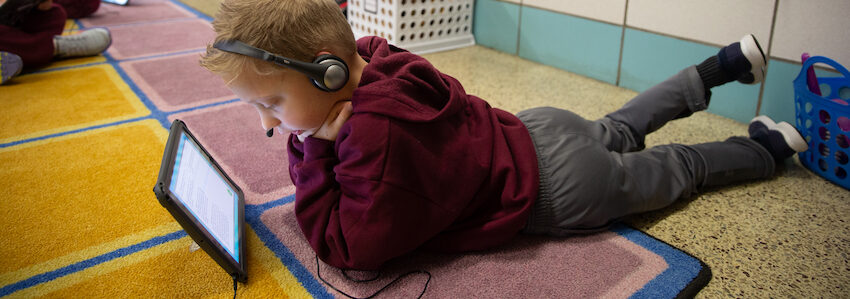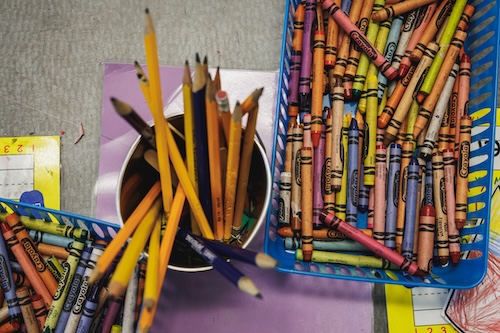
Across the country, teachers are beginning to plan for instruction after winter break. At some point during the second half of the school year, their calendars are marked “state assessments.” They’ve blocked off several days—maybe a week or more—for lessons to prepare students for the content on those tests. For some, it will be a race to the finish; for others, the tests will be a distraction from the curricular focus that has engaged students so far this school year.
We’ve heard from teachers that, though they believe deeply in measuring student learning, many existing state testing models can disrupt the flow of their instruction and don’t always deliver actionable information they can use to improve the learning experience for the students in their classroom. They want innovative assessment models that provide results sooner, limit the disruption in their classroom, and can still be used to ensure schools are serving all students.
An old problem
It is no secret in American education that our approach to summative assessment needs to change. Federal law requires schools to assess students from grades 3 through 8 and, once in high school, measure their achievement against state standards. Test developers try to design those summative tests so the results will help teachers and principals identify students who are falling behind and how to help them recover. But the data needs to be more precise, be more aligned to instruction, take less class time to gather, and arrive sooner to transform a teacher’s instructional approach.
Test developers have created innovative assessments that are shorter, more frequent, and able to deliver results on a quicker timetable. However, federal rules and procedures must change before states can pilot and adopt these creative solutions, and the assessments must be implemented in a way that ensures they still provide a valid end-of-year summative score that can be compared across schools and districts.
In the meantime, teachers must build their schedules around assessments they don’t consider helpful. As the summative assessments near, they may have to pause a series of lessons that engage their students deeply and switch to less exciting content on the test. When the results come back too late to have an impact, the testing feels like an exercise in frustration.
Exploring solutions
In the coming months, teachers who are members of Educators for Excellence’s (E4E) National Teacher Leader Council (NTLC) will explain to Teach. Learn. Grow. readers how assessments affect their classroom practice and how to improve them so they can use assessments to help their students. They will explain that they want a summative measure of student learning but don’t currently fully trust the data that comes back, can’t use that data to support their students, and find that the time to prepare and administer these tests is too disruptive.
The teachers’ articles will illuminate key findings in E4E’s national teacher survey, Voices from the Classroom. In the 2023 survey of 1,000 teachers in districts or public charter schools, E4E found the following:
- Teachers believe deeply in the value of measuring student learning, as evidenced by 90% of teachers believing that students should have a summative measure of their learning from the beginning to the end of the school year, and 83% believing that teachers should be responsible for their academic progress.
- Teachers say they need the tools to measure students’ progress through the school year. Only 29% of teachers said they received formative assessments aligned to their curricular materials, and only 38% said they received professional learning to support them in aligning assessment data to their everyday practice.
- Teachers need to be taught how to use or communicate about test results. Only 38% of teachers had received the necessary training to leverage student assessment data effectively, and fewer than two-thirds reported using assessment data to inform parents and guardians of a student’s progress.
These teacher authors will provide practical advice. They will suggest making assessments adaptable to provide a comprehensive report on a student’s progress. They will describe the types of tools that parents and guardians use when reading their child’s assessment scores. They will explain how training would help them understand test results and apply what they learn to improve their instruction.
Sharing these ideas provides education leaders at every level with specific tasks that respond to what teachers want. We can make that happen with the right mix of innovative assessments, policies that support those assessments, and investments in teachers’ professional development and growth. Once we respond, teachers will have more effective tools to help their classroom practices; parents and guardians will get the information they need to support their children’s educational journey; and policymakers will have better measurement tools to track the success of education policies.
Once these suggestions become standard practices, teachers will be able to plan a calendar where their instruction is aligned with the statewide assessments their students take. They will be able to set aside time to review the assessment results and adjust their teaching to address students’ needs. We are ready to collaborate with policymakers, educators, and teachers to make this vision a reality.







